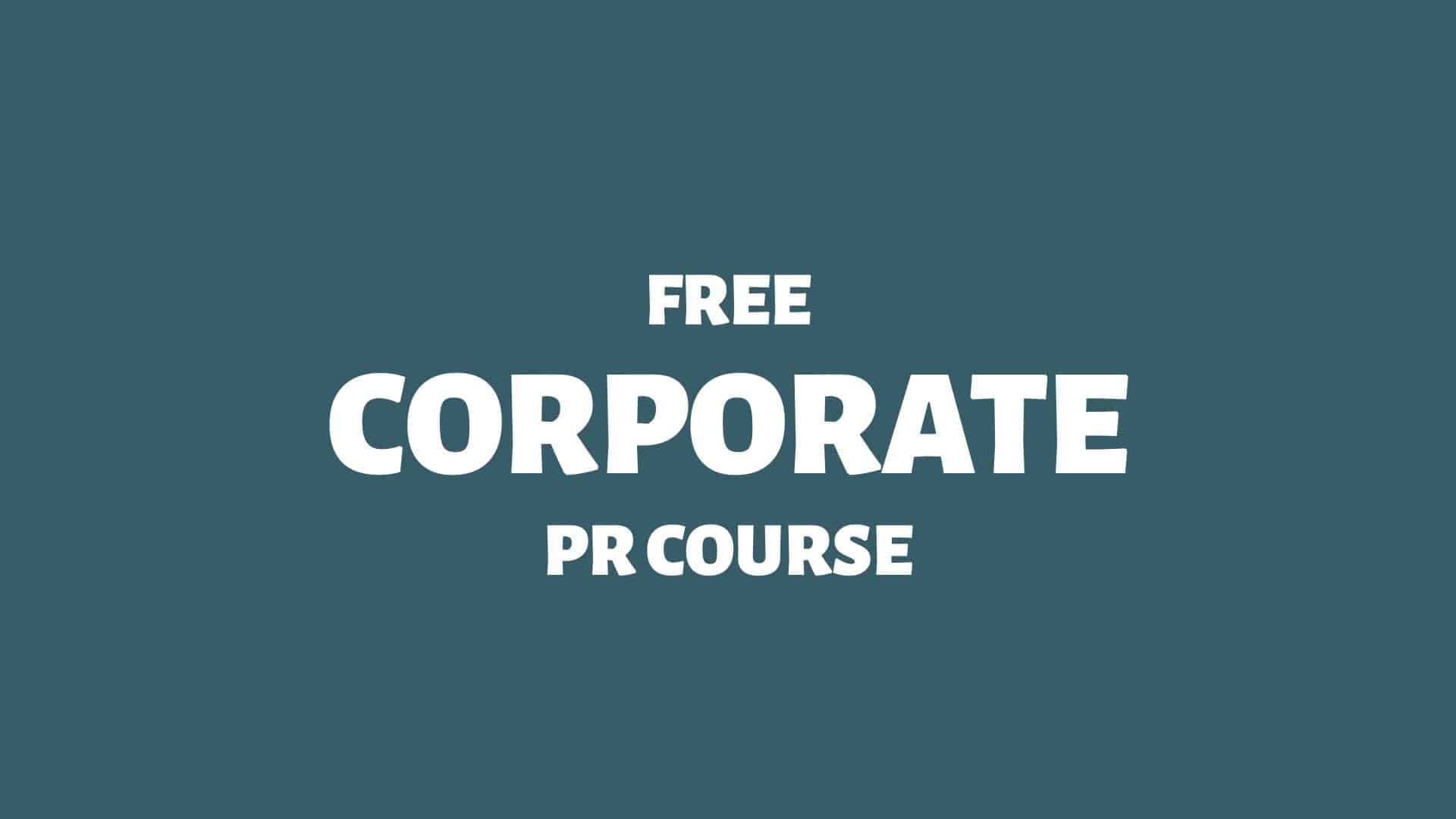Can PR escape corporate mediocrity?
The digital revolution has improved many things. However, it has done little to improve the average quality of corporate content.
Look, I get it:
I’ve been blogging since 2002 and published my fair share of mediocre content. It happens.
But can we escape corporate mediocrity?
Here we go:
Corporate Mediocrity: The Epidemic
In the world of corporate communication, there’s an epidemic:
It’s not a virus or a scandal. It’s something far more insidious that seeps into every email, press release, and LinkedIn post. It seems to be a paralysing, soul-crushing fear of saying something truly meaningful.
It’s corporate mediocrity.
Welcome to the land of mediocrity, where blandness reigns supreme and boldness is reserved for multi-billionaires with god complexes.
But imagine, just for a moment, a world where invisible chains didn’t bind corporate communication.
A world where corporate messaging sparkled with sophistication and style, where words danced off the page and ignited imaginations.
But that is perhaps a pipe dream.
We may be waiting for AI to help organisations write better. Most corporate communication crafted by humans today wouldn’t even pass the Turing test.
Learn more: Corporate Mediocrity
The Comfort of Cowardice
The problem starts with unwarranted caution. There’s a pervasive fear of saying something that evokes real emotion in corporate halls, which drives talented communicators to hide behind jargon and corporate platitudes.
Why say something bold when you can say something safe?
But in communication, safety is an illusion. Playing it safe is a most dangerous game. It leads to communication that’s not just boring but invisible.
LinkedIn, once a platform for genuine professional networking, has become a paradise for corporate pretentiousness. Scroll through your feed, and you’ll see tirades of buzzwords, empty accolades, and hollow victories.
LinkedIn has devolved into a digital echo chamber where everyone talks, but no one is saying anything.
The Perils of Platitudes
Jargon and corporate platitudes are the crutches of the unoriginal. They give the illusion of sophistication while saying absolutely nothing.
Terms like “synergy,” “innovation,” and “thought leader” have been stripped of their meaning, leaving behind a shell of what could have been.
It’s time to banish these empty words and replace them with language that resonates with people, not just middle managers.
Sophistication isn’t about big words or complex sentences. It’s about clarity, brevity, and impact. It’s about crafting messages that speak to the heart and mind that linger long after the reader has moved on.
Good communication is an art form; like all art, it requires a touch of bravery and vision.
A Call to Bravery
So, how do we break free from the shackles of mediocrity?
By being brave. By celebrating sophistication and style over pretentiousness and cowardice.
Being brave is about taking risks and trusting that our audience is intelligent, discerning, and hungry for authenticity.
Imagine a press release that reads like a story, with characters, conflict, and resolution. Imagine an email that doesn’t just inform but inspires. Imagine a LinkedIn post that’s not just a humblebrag but a genuine insight into your world.
Maybe I’m naïve to think this could work.
The Road Ahead
Change won’t happen overnight. It requires a shift in mindset, a commitment to excellence, and a willingness to stand out. But the rewards could be immense.
Let’s engage in communication that builds trust, fosters loyalty, and sets you apart in a crowded marketplace.
In the end, the choice is yours. You can continue to swim in the sea of mediocrity, or you can rise above the noise and make a real impact.
Be bold.
Be sophisticated.
Be the voice that cuts through the clutter and makes a lasting impression.
The world is waiting. Let’s not settle for mediocrity when we can be extraordinary. Let’s not be afraid to infuse our corporate communications with elegance and a dash of daring.
We’re All Media Companies
In many ways, we’re all media companies now.
For better or worse.
It’s grim irony that our most successful media companies, like Google and Facebook, don’t produce any content in this information age.
Therefore, editorial content is a massive PR opportunity. We must push beyond the honeytrap of checking publishing off as “done” and then being indifferent to the fact that our content will never get noticed.
After years of struggle with online communication and not getting good enough results, many businesses are slowly concluding that mediocrity is no longer good enough.
Wastelands of Mediocre Content
The sufficient content quality resembles an invisible stone wall between two online territories. On one side of the wall, we find green pastures, fertile soil, and many people. On the other side, there’s nothing but empty wastelands.
It’s the desolate plains of corporate cringe.
When you find yourself on the wrong side of this stone wall, you can publish your corporate content however often, but nothing seems to grow in these desolated long-tail plains.
It would be best to get yourself over that stone wall and into the territory on the other side of that wall, where there are real people.
But what would that take?
What is Content Quality, Then?
To be allowed into the lush territory inhabited by real people, producing and publishing great content seems like a passport.
People will gather to watch in hoards if you produce and publish Game of Thrones. But we’re not HBO. We’re organisations that have and sell anything from toothpaste to medical equipment. We provide products and services. Whether for profit or not, we’re organisations that make society work.
A new line of server appliances or having the best avocados on the market will never be as interesting as the bloody struggles of the Seven Kingdoms.
The harsh reality is that the algorithms have considerably raised the bar for content quality. We can readily appreciate that the algorithms will sort out lousy and bad content, but we must also get used to them eliminating average and good content.

Corporate Cringe
Many corporate texts are written in poor taste. Unlike many other creative professions, corporate communications have somehow forgotten that having great taste is an actual skill.
I sometimes wonder if corporate communications suffer from an industry-wide shortage of good taste.
Here are some typical examples of corporate cringe:
By being aware of these pitfalls, organisations can refine communication strategies to ensure more authentic and effective engagement with their stakeholders, influencers, and publics.
More examples: https://www.reddit.com/r/corporatecringe/
A Difficult Conversation
Perhaps we’re drowning ourselves in corporate cringe since we’ve never had this conversation.
Having worked as a corporate communications adviser since 2005, I’ve told CEOs that their strategies are plain wrong. I’ve told marketers that they’re hurting their brand from short-sightedness. I’ve told communicators that they’ve spent huge budgets on unnecessary activities.
Why? Because clients pay me to be a truth-sayer.
Writing, however, is… a touchy subject.
Tell a head of communications that their corporate communication is cringe, and you’re out faster than their minions can slam the door behind you.
Telling anyone their writing sounds boring is rough — even for me — but it must be done.
If you drench corporate communication with platitudes and uninspired, stale, and corny hyperboles, it does make a difference.
We might adequately plan, execute, and measure our activities, but that won’t matter if our communication activities sound corny.
Good Taste is a Rare — But Important — Skill
Unlike many other creative professions, corporate communications often seem oblivious to the importance of being … tasteful. Our industry’s ignorance of what constitutes good taste is peculiar because we ought to know better.
We are communication professionals, after all.
Tonality isn’t just for copywriters.
Look and feel isn’t just for art directors.
Great taste is a PR skill, too.
But there’s a way out of this poorly lit tunnel of mediocrity. We’re in a position to mitigate cringe-worthy corporate messaging:
If you’re blessed with a colleague with a sense of taste, let them have their say. Don’t allow ego and hierarchy to get in the way of good communication.
Never settle, never give up.
Join the fight against corporate cringe.
Learn more: Corporate Cringe
Platitude Sickness: Trigger List
I hate corporate platitudes everywhere I see them. I swear, a kitten dies every time.
“A platitude is a trite, meaningless, or prosaic statement, generally directed at quelling social, emotional, or cognitive unease. The word derives from plat, the French word for “flat.” Platitudes are geared towards presenting a shallow, unifying wisdom over a difficult topic. However, they are too overused and general to be anything more than undirected statements with an ultimately little meaningful contribution towards a solution.”
Source: Wikipedia 1Platitude. (2023, December 9). In Wikipedia. https://en.wikipedia.org/wiki/Platitude
Here’s my “trigger list” of platitudes:
Getting rid of corporate platitudes is an uphill battle. They are such a waste of editorial space and only lead straight to mediocrity.
Join the resistance!
Learn more: The Platitude Sickness: The Trash of Corporate Writing
“Do Better” Is Not Helpful Advice
“Do better” isn’t helpful advice. It’s the equivalent of telling a lost soul dying of thirst in the scorching desert to “drink some water”.
However, “do less of what isn’t working” is helpful.
If you’re investing valuable resources into producing mediocre content today, you can allocate those efforts differently tomorrow. Remember that there’s no general content shortage online; you could focus your efforts on improving quality.
Yes, this means putting out less content. Yes, less content will mean taking a hit in the short term. Taking a hit in reach will mean fewer conversions — temporarily.
But putting out high-quality evergreen content at a lower frequency will gain momentum and propel patient and consistent brands over that stone wall. Raising the bar for content quality will instil new and valuable processes in your organisations.
No more corporate platitudes.
No more corporate cringe.
When you finally push past critical mass, your content marketing will soar, and you will start to touch people’s hearts and minds.
How To Escape Corporate Mediocrity
What should you do if you find yourself stuck in the non-fertile and rugged online wasteland where nothing your organisation says or does ever gets traction?
Get your content strategy in order and, then, never settle for mediocre content again.

THANKS FOR READING.
Need PR help? Hire me here.

What should you study next?
Spin Academy | Online PR Courses

Spin’s PR School: Free Corporate PR Course
Explore this Free Corporate PR Course to learn strategic communication insights and techniques and stay ahead in the competitive public relations industry.
Corporate Communications
Agency Collaboration
Corporate Messaging
Corporate Challenges
Learn more: All Free PR Courses
💡 Subscribe and get a free ebook on how to get better PR.

Annotations
| 1 | Platitude. (2023, December 9). In Wikipedia. https://en.wikipedia.org/wiki/Platitude |
|---|


